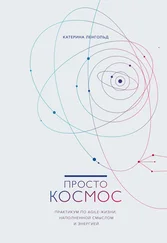Адаптировано из главы ‘Peace of mind’ из: Owen, Jo (2012). How to Manage: The Art of Making Things Happen. Third edition. Harlow: Pearson.
Miller, Liz (2009). Mood Mapping: Plot Your Way to Emotional Health and Happiness. London: Pan Macmillan.
Magistretti, Pierre J., Pellerin, Luc, Martin, Jean-Luc (1995). ’Brain energy metabolism: an integrated cellular perspective’. In: Floyd E. Bloom, David J. Kupfer (eds). Psychopharmacology: The Fourth Generation of Progress. New York: Raven Press, 657–670.
Puddicome, Andy (2011). Get Some Headspace: 10 Minutes Can Make All the Difference. London: Hodder & Stoughton.
Schaufenbuel, Kimberly (2014). ’Bringing mindfulness to the workplace’. UNC Kenan-Flagler Business School. [Online] Доступно на: http://www.kenan-flagler.unc.edu/~/media/Files/documents/executive-development/unc-white-paper-bringing-mindfulness-to-the-workplace_final.pdf.
Covey, Stephen R. (2004). The 7 Habits of Highly Effective People: Powerful Lessons in Personal Change. London: Simon & Schuster.
Стивен Р. Кови. Семь навыков высокоэффективных людей. Мощные инструменты развития личности. М.: Альпина Паблишер. 2017.
Виктор Франкл. Человек в поисках смысла. М.: «Прогресс», 1990.
Frankl, Viktor E. (1985). Man’s Search for Meaning. New York: Washington Square Press.
Williams, Anna (2015). ’8 successful people who use the power of visualisation’. Mindbodygreen, 8 July. [Online] Доступно на: http://www.mindbodygreen.com/0-20630/8-successful-people-who-use-the-power-of-visualization.html.
Расс Хэррис. Ловушка счастья. Перестаем переживать – начинаем жить. М.: Эксмо, 2012.
Harris, Russ (2007). The Happiness Trap: Stop Struggling, Start Living. Wollombi, NsW: Exisle Publishing.
Lally, Phillipa, Van Jaarsfeld, Cornelia H. M., Potts, Henry W. W., Wardle, Jane (2010). ’How are habits formed: Modelling habit formation in the real world’. European Journal of Social Psychology, October, 40 (6), 998–1009.
Kushlev, Kostadin, Dunn, Elizabeth W., Lucas, Richard E. (2015). ‘Higher income is associated with less daily sadness but not more daily happiness’.Social Psychological and Personality Science, 6(5), 483–489.
Kahneman, Daniel, Deaton, Angus (2010). ‘High income improves evaluation of life but not emotional well-being’. Proceedings of the National Academy of Sciences of the United States of America (PNAS), 107(38), 16489–16493. [Online] Доступно на: http://www.pnas.org/content/107/38/16489.full.
Eastern, Mark (2006). ‘Britains’ happiness in decline’. BBC News, 2 May. [Online] Доступно на: http://news.bbc.co.uk/1/hi/programmes/happiness_formula/4771908.stm.
Diener, Ed, Horwitz, Jeff, Emmons Robert A. (1985). ‘Happiness of the very wealthy’. Social Indicators Research, 16, 263–274.
Society for Personality and Social Psychology (2015). ‘Can money buy happiness? The relationship between money and well-being’. EurekAlert! 27 February. [Online] Доступно на: https://www.eurekalert.org/pub_releases/2015-02/sfpa-cmb021815.php.
Allard, Gayle (2003). ‘GDP and happiness’. IE Business School, 22 November. [Online] Available from: http://focus.ie.edu/es/node/2252.
Easterlin, Richard A. (1995). ‘Will raising the incomes of all increase the happiness of all?’ Journal of Economic Behavior and Organization, 27, 35–47.
Staw, Barry M., Sutton, Robert, I., Pelled, Lisa H. (1994). ‘Employee positive emotions and favourable outcomes at the workplace’. Organization Science, 5(1), 51–71.
Achor, Shawn (2010). The Happiness Advantage: The Seven Principles that Fuel Success and Performance at Work. New York: Crown Business.
Schmitz, Taylor W., De Rosa, Eve, Anderson, Adam K. (2009) ‘Opposing influences of affective state valence on visual cortical encoding’. The Journal of Neuroscience, 29(22), 7199–7207.
De Neve, Jan-Emmanuel, Oswald, Andrew J. (2012). ‘Estimating the influence of life satisfaction and positive affect on later income using sibling fixed effects’. Proceedings of the National Academy of Sciences of the United States of America (PNAS), 109(49).
Hapacus Team (2010). ‘The happiness formula: H = S + C + V’. Hapacus, 11 March. [Online] Доступно на: http://hapacus.com/blog/the-happiness-formula-h-s-c-v.
Lyubomirsky, Sonja (2010). The How of Happiness: A Practical Guide to Getting the Life You Want. London: Piatkus.
Тал Бен-Шахар. Научиться быть счастливее. М.: Попурри. 2009.
Ben-Shahar, Tal (2007). Happier: Learn the Secrets to Daily Joy and Lasting Fulfillment. New York: McGraw-Hill.
Текст дается в переводе Н. М. Демуровой. Прим. ред.
Boniwell, Ilona (2008). Positive Psychology in a Nutshell. Second edition. London: PWBC.
Ariely, Dan, Wertenbroch, Klaus (2002). ‘Procrastination, deadlines and performance: Self-control by precommitment’. Psychological Science, 13(3), 219–224.
Webb, Caroline (2016). How to Have a Good Day: Think Bigger, Feel Better and Transform Your Working Life. London: Macmillan.
Preston, David Lawrence (2009). 365 Ways to Be Your Own Life Coach. Second edition. Oxford: How To Books.
Елена Келлер. История моей жизни. М.: Захаров, 2003.
Rowan, Sophie (2008). Happy at Work: Ten Steps to Ultimate Job Satisfaction. Harlow: Pearson.
Seligman, Martin E. P. (2003). Authentic Happiness: Using the New Positive Psychology to Realize Your Potential for Lasting Fulfillment. London: Nicholas Brealey Publishing.
Альберт Эллис (1913–2007) – американский психолог и когнитивный терапевт, создатель рационально-эмоциональной поведенческой терапии. Прим. ред.
Nawijn, Jeroen, Marchand, Miquelle A., Veenhoven, Ruut, Vingerhoets, Ad J. (2010). ’Vacationers happier, but most not happier after a holiday’. Applied Research in Quality of Life, February, 5(1), 35–47.
McLeod, Andrew K., Conway, Clare (2005). ’Well-being and the anticipation of future positive experiences: The role of income, social networks, and planning ability’. Cognition and Emotion, 19(3), 357–374.
Читать дальше
![Мелина Кости Вдохновляющий лидер [Команда. Смыслы. Энергия] [litres] обложка книги](/books/409368/melina-kosti-vdohnovlyayuchij-lider-komanda-smysly-cover.webp)

![Фрэнк Мартела - Wonderful Life. Размышления о том, как найти смысл жизни [litres]](/books/390695/frenk-martela-wonderful-life-razmyshleniya-o-tom-k-thumb.webp)
![Уильям Грейвс - Американская интервенция в Сибири. 1918–1920 [Воспоминания командующего экспедиционным корпусом] [litres]](/books/396017/uilyam-grejvs-amerikanskaya-intervenciya-v-sibiri-1-thumb.webp)
![Мелина Боярова - Ведьма в академии магов [litres]](/books/400644/melina-boyarova-vedma-v-akademii-magov-91-litres-thumb.webp)
![Евгений Матерёв - Музеи… или вдохновляющая музыка The Chemical Brothers [litres самиздат]](/books/437288/evgenij-materev-muzei-ili-vdohnovlyayuchaya-muzyka-th-thumb.webp)
![Григорий Тульчинский - Фейки - коммуникация, смыслы, ответственность [litres]](/books/438711/grigorij-tulchinskij-fejki-kommunikaciya-smysly-thumb.webp)





